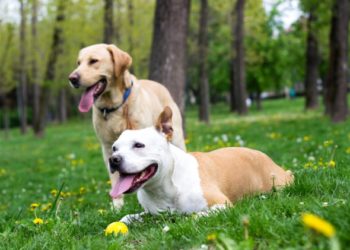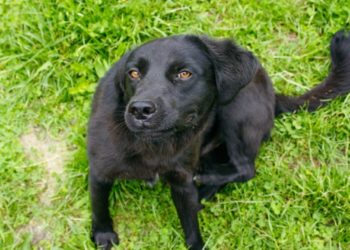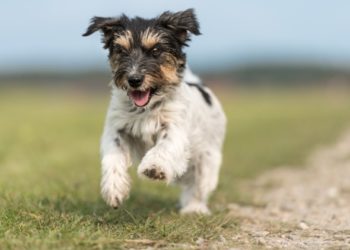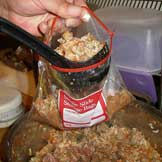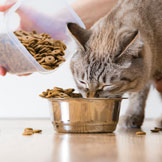
Today over on Nutrition Nuggets for dogs, I started a discussion on the variability that exists in the diet pet food market. Now let’s look at how owners can actually use the numbers printed on the label of these products to help dogs and cats lose weight.
I’m afraid there is just no way to avoid doing some math when it comes to determining how much of a particular food you should feed to achieve weight loss. First, owners need to know how many calories their pets should be taking in. Your pet’s veterinarian is your best source for this information, but if you want to do the calculations yourself, here are some typical formulas:
Then, find the caloric density for the food you are interested in feeding. It may be printed on the label. If not, call the manufacturer or look on the company’s website. It should be written in the form of so-many kcal per cup or can. Divide your pet’s recommended number of calories per day by the number of kcals per cup or can, and you have the daily amount of that food (and that food alone) that you should be feeding.
Of course, since caloric needs can vary greatly between individuals, you may find that you need to increase or decrease that amount by as much as 20 percent to achieve a healthy rate of weight loss, which is generally considered to be around 1-2 percent of a pet’s body weight per week (more math!).
For example:
A 100 pound Rottweiler can lose 1-2 pounds per week while a ten pound cat should only lose around 1.6 to 3.2 ounces in the same amount of time.
And here’s another conundrum. As pets lose weight, these calculations continually change and the number of calories consumed needs to be decreased accordingly. If after six weeks, the aforementioned Rottweiler has lost 10 pounds but we continue to feed him as if he weighs 100 pounds, weight loss will plateau. Therefore, every month or so, it is essential to recalculate how much a pet should be taking in. Here’s what that looks like:
The numbers aren’t as dramatic for cats but the differences are still vital. Let’s say our feline friend Ernie weighs 18 pounds and is trying to get down to a healthy weight of 12 pounds. When he starts his weight loss program he should be taking in around 270 kcal per day or 0.82 cups of a 330 kcal/cup food but when he hits 15 pounds he needs only 236 cal per day or 0.72 cups of our example 330 kcal/cup diet.
I don’t mean for this discussion regarding diet pet foods and weight loss to be discouraging. If you feel up to the math and the monitoring that is required, by all means go for it. On the other hand, if your head is spinning talk to your veterinarian. He or she can recommend an appropriate weight loss food, do the necessary calculations based on the food’s caloric density and your pet’s size, come up with a schedule for weigh-ins, and tweak the diet recommendations based on how things go. You don’t have to go it alone!

Dr. Jennifer Coates
Image: Hasloo Group Production Studio / via Shutterstock


